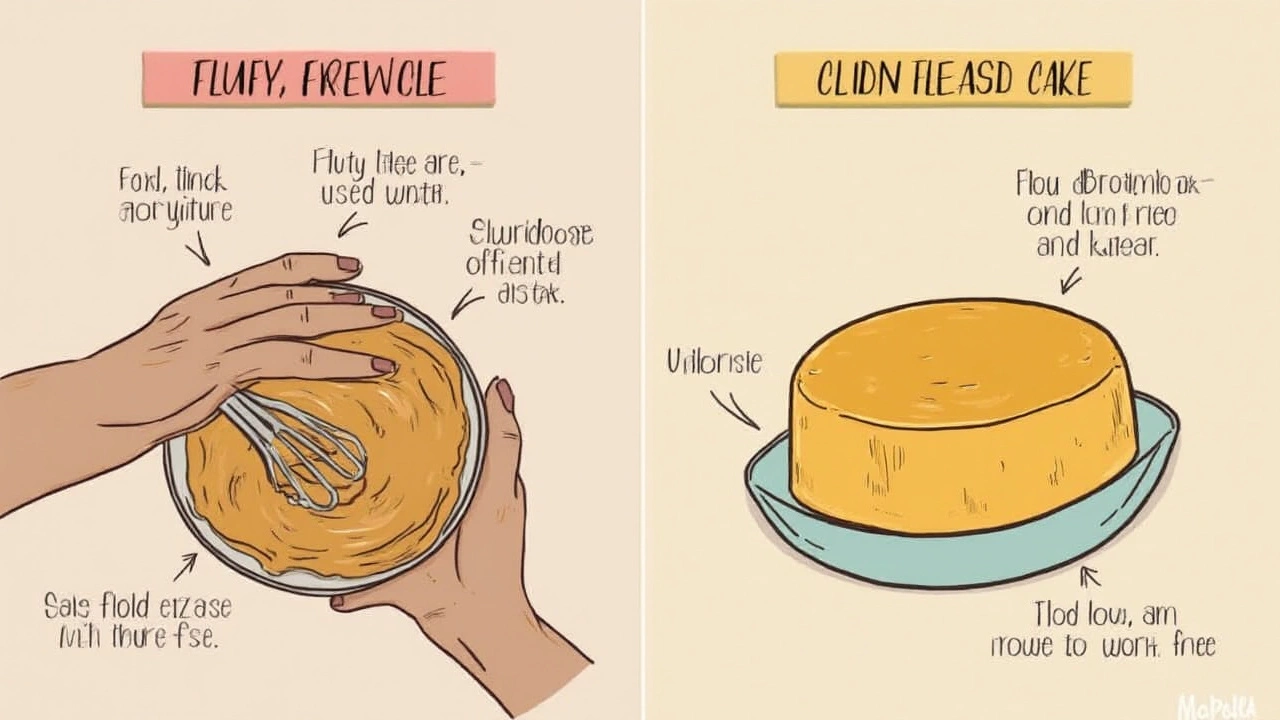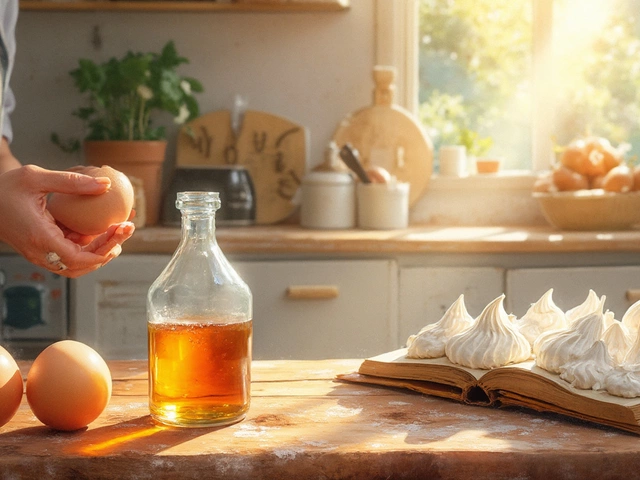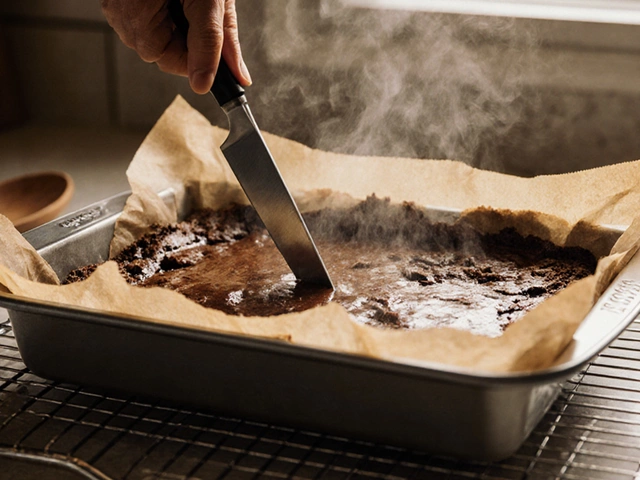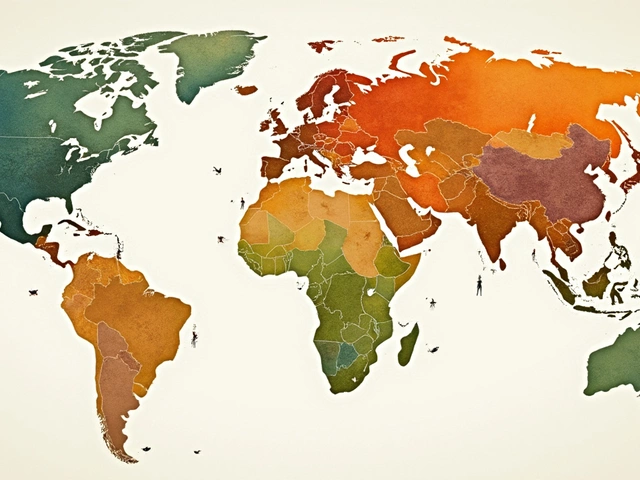
Biting into a gluten-free cake only to get a mouthful of sticky, dense gumminess? You’re definitely not alone. This is the number one complaint I hear from home bakers who just want their cake to taste like, well, cake.
The usual culprit? It almost always starts with the blend of flours and starches. Gluten helps trap air and give structure—that’s what makes regular cakes so fluffy. So when you swap it out, your cake mix can quickly turn heavy or even gluey if you don’t balance your ingredients just right.
You might think adding more moisture (like applesauce or extra eggs) will help make the cake soft, but that trick can actually backfire. Too much liquid in gluten-free recipes often leads to a batter that refuses to bake through and stays gummy in the center.
So, what works instead? Getting familiar with the right flour combinations, nailing the mixing technique, and keeping a close eye on baking time are the real game-changers. Stick around for no-fuss tips that can seriously raise your gluten-free baking game and finally put an end to those sticky cake disasters.
- What Makes Gluten-Free Cakes Gummy?
- Getting the Right Flour Blend
- Mixing Methods That Matter
- Baking Times and Temperatures
- Easy Fixes and Go-to Tips
What Makes Gluten-Free Cakes Gummy?
The number one thing behind that gummy bite isn’t a mystery—it’s usually a case of ingredients not playing well together. When you take out gluten, the structure that usually forms air pockets and keeps cakes light just isn’t there. So, when your recipe doesn’t have the right balance, your cake turns dense or chewy instead of airy.
According to America’s Test Kitchen, “Gluten-free flours absorb liquid differently. Without gluten, cakes need extra care to avoid dense or sticky results.”
"If your cake feels like sticky dough, you’re probably dealing with too much moisture, the wrong starch, or not enough leavening." — Cindy Gordon, gluten-free baking coach
Here are the main offenders that cause a gluten-free cake to go gummy:
- Too much starch: A lot of gluten-free blends rely heavily on tapioca or potato starch. While these add a soft texture, too much makes the cake sticky.
- Extra liquid: Adding more applesauce, oil, or yogurt might sound smart for moisture, but gluten-free flours can’t hold onto it the way wheat flour does. The result? Uncooked, wet centers.
- Lack of aeration: If you skip sifting or overmix the batter, you lose those important air bubbles. Less air = denser cake.
- Wrong flour blend: Not all gluten-free flours behave the same. Rice flour can make things gritty, while sorghum or bean flours can get pasty if you go overboard.
- Not enough leavening: Regular cakes don’t need as much baking powder or soda, but GF cakes rely on it for lift. Not using enough means the cake never rises, baking up as a gummy brick.
Check out this breakdown from a recent baker’s poll of the most common issues:
| Common Mistake | Impact on Cake | % of Bakers Affected |
|---|---|---|
| Too much liquid | Gummy, raw texture | 56% |
| Poor flour blend | Dense or sticky crumb | 44% |
| Not enough leavening | Flat, heavy cake | 39% |
| Overmixing batter | Chewy, rubbery bite | 21% |
The bottom line? Getting the texture right is less about luck and more about balance. If your cake turns gummy, tweak your flour blend, double-check your leavening, and go easy on liquids. Keep reading for more practical fixes and the best ingredient combos to try next time.
Getting the Right Flour Blend
If your gluten-free cake comes out sticky or dense, the flour blend is almost always to blame. Not all gluten-free flours act the same, so just swapping in rice flour or almond flour for wheat doesn’t cut it. It takes a careful mix of flours and starches to mimic what gluten does in regular baking.
Here’s what’s really going on: Gluten in wheat flour holds things together and gives cakes a bit of bounce. When you leave it out, you need to replace both structure and softness. Some flours (like brown rice or sorghum) bring the bulk, while starches (like tapioca, potato, or cornstarch) help lighten up the texture.
- Most bakers have good luck with blends that mix at least two flours and two starches. Think brown rice + sorghum + potato starch + tapioca starch, or millet + white rice + cornstarch + arrowroot.
- Off-the-shelf, all-purpose gluten-free flour blends can work, but they’re not all equal. Look for ones that list xanthan gum or guar gum—these act as binders to prevent that dreaded gummy feel.
- If you’re mixing your own, keep starches to about 40-50% of the blend. More than that? Hello gummy cake.
Skip single-flour cakes; they almost always come out gluey or unpleasantly chewy. And never trust a recipe that promises perfect results with just almond or coconut flour—those need special tricks to come out nice.
If your blend is working but things are still a little gummy in the center, check if you need more binder (like xanthan gum or psyllium husk) or a touch less starch next time. Play with ratios. Write down what worked. Once you hit the sweet spot, stick with that blend for consistent results every time you bake.

Mixing Methods That Matter
When you’re baking a gluten-free cake, the way you mix your batter is a make-or-break factor. Unlike regular cake batter, gluten-free mixes need special treatment. Overmixing can mess up the texture, and undermixing leaves you with streaks of flour or uneven structure. Getting this part right means less gumminess and more that true cake feel.
The main thing to know: gluten-free batters can handle a little more mixing than wheat-based ones before turning tough. That’s because there’s no gluten to develop and get chewy, but you still don’t want to go wild with the mixer. For the best results, start by creaming your fat (usually butter or oil) with sugar until it’s fluffy. Then, add eggs one by one. Next, mix your dry ingredients in a separate bowl to make sure all your powders—like baking powder and salt—are spread out evenly.
Now here’s the critical part: slowly add the dry ingredients to your wet mix, alternating with any liquids (like milk or non-dairy milk). Mix until you just stop seeing dry flour. Ignore the urge to keep going; extra mixing can lead to a cake that bakes up dense and, yes, even gummier than before.
Let’s break it down step-by-step:
- Cream butter/oil and sugar until it lightens in color
- Add eggs one at a time, mixing gently each time
- In another bowl, whisk together all dry ingredients
- Add dry ingredients to wet in two or three additions, alternating with your milk
- Stop mixing as soon as you can’t see any streaks of flour
Resting the batter for 10-15 minutes before baking also helps, especially for rice-based flour blends. This gives the flours time to hydrate and makes for less grit and more even texture, but don’t let it sit so long it starts to thicken too much.
Here’s a quick look at what happens if you overmix versus undermix in gluten-free baking:
| Mixing Style | Typical Result |
|---|---|
| Overmixed | Dense, heavy, possibly wet or gummy |
| Undermixed | Dry pockets, crumby, doesn’t hold together |
| Just Right | Moist, soft crumb, even bake |
The sweet spot? Mix until just combined, rest the batter a little if you can, and you’ll skip the sticky mess next time. Don’t settle for "almost cake"—nail the mixing, and you’ll taste the difference.
Baking Times and Temperatures
If you’ve nailed the flour blend but your gluten-free cake still comes out gummy, the oven might be the sneaky culprit. Gluten-free cakes almost always need a little extra time in the oven compared to wheat-based ones. Why? The alternative flours and starches hold on to moisture differently and just don’t set up as quickly.
Set your oven between 325°F and 350°F (163°C to 177°C) for most recipes. Higher temperatures can brown the outside too fast, tricking you into thinking the cake is done while the middle’s still raw and sticky. That’s the fastest way to land in gummy territory.
Here’s a quick guide to help you with baking times and oven settings popular for gluten-free cake recipes:
| Pan Size | Temperature (°F) | Typical Bake Time |
|---|---|---|
| 8-inch round | 325 | 45-55 min |
| 9x13-inch pan | 350 | 35-45 min |
| Standard cupcakes | 350 | 20-25 min |
Don’t just trust the timer, though. Check for doneness by lightly pressing the center—if it springs back and a toothpick comes out clean (or mostly clean), you’re good. If the cake jiggles in the middle or the tester is gooey, it’s definitely not ready.
Keep in mind, convection ovens bake faster and more evenly. If you have the option, drop the temp by 25°F and start checking a few minutes early. But don’t be tempted to open the oven door a lot. Sudden temperature drops make cakes sink, especially gluten-free ones, and that always ends with a soggy middle.
One last lifesaver: If your oven runs hot or cold (cheap oven thermometer, anyone?), calibrate or adjust as needed. Even a 10°F difference makes a big impact when baking gluten-free.
- Always preheat. Don’t skip this step—gluten-free batters are touchy.
- Don’t underbake. A pale or doughy-looking cake probably needs more time, not a lower temp. Give it a few more minutes then check again.
- Cool completely before slicing. Hot gluten-free cakes are way more likely to taste gummy—that sets as they come to room temp.

Easy Fixes and Go-to Tips
Ready to ditch that dreaded gummy texture in your gluten-free cake? Here’s the stuff that actually works—no guesswork, just straightforward fixes that bakers swear by.
- Measure by weight, not cups. Gluten-free flours can be weirdly dense or light. Using a digital scale means you hit that sweet spot every time. Even a 10-gram difference can throw off your cake’s texture!
- Add binders, but don’t overdo it. Xanthan gum or psyllium husk helps mimic what gluten does in regular cakes. Usually, one-quarter to half a teaspoon per cup of gluten-free flour is plenty—dumping in more just guarantees more gumminess.
- Let the batter rest. Resting for 20-30 minutes before baking gives flour and starches time to fully hydrate. This makes a big difference: you get better structure, less stickiness.
- Don’t overmix. Once your batter is combined, stop. Too much mixing can make things gluey. Just fold everything together gently.
- Watch your oven temp. Gluten-free cakes are really picky about heat! An oven thermometer costs $10 and can save you from underbaking nightmares.
- Test for doneness. Don’t just trust the clock—stick a toothpick in the center. If it comes out gooey (not just moist), your cake needs more time.
Here’s a quick look at what causes common gluten-free fails and what fixes them:
| Problem | Likely Cause | Quick Fix |
|---|---|---|
| Gummy middle | Too much liquid, underbaked | Weigh ingredients, bake longer, rest batter |
| Soggy bottom | Wrong flour blend, pan too full | Try a lighter blend, fill pan 2/3 full max |
| Tough or dense crumb | Overmixed, too much binder | Mix gently, use less xanthan gum |
If you’re feeling frustrated, you’re in great company. Cookbook author America’s Test Kitchen shares,
"Patience is your best friend when baking gluten-free cakes. Most cakes need 5–10 extra minutes and some trial and error. But once you find what works, the results are worth it."
Try making small recipe tweaks—write what you change each time so you can repeat your successes (and skip past the failures). And if your cakes are almost perfect but still a little sticky, slicing and letting it cool completely can often fix those last bits of gumminess. Don’t be afraid to experiment—that’s how every great gluten-free baker gets their groove.





